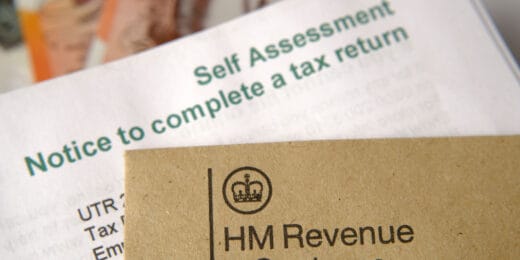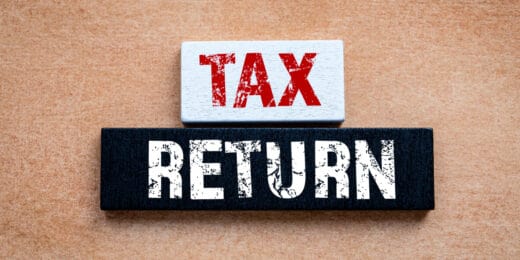All limited companies registered in the UK are required to prepare financial accounts each year and deliver them to Companies House and HMRC. These accounts, which may also be referred to as ‘annual accounts’ or ‘statutory accounts’, report the financial activity and performance of a company during its previous financial year.
The financial year of a limited company is usually a 12-month period that ends on the ‘accounting reference date’ (ARD), which normally falls the anniversary of company formation. Annual accounts are also used to work out how much Corporation Tax a company has to pay to HMRC on its taxable profits.
Different types of limited company accounts
Every company, whether trading or dormant (not trading), must prepare accounts and provide copies to their members (shareholders or guarantors) and Companies House. Trading companies must also submit accounts to HMRC with each Company Tax Return.
There are 5 types of annual accounts for UK limited companies:
- Micro-entity accounts
- Small company accounts
- Medium-sized company accounts
- Large company accounts
- Dormant company accounts
There are three classifications of company accounts for trading companies: small, medium, and large. Within the small company classification there is a subset called micro-entity, which applies to very small companies.
The size of a company is determined by various thresholds for annual turnover, balance sheet total, and average number of employees, each of which impacts the amount of accounting data required in the accounts.
Dormant companies need only prepare dormant accounts for Companies House. They do not have to submit accounts to HMRC or prepare a Company Tax Return when they are not trading for the entirety of their financial year.
Content summary:
Micro-entity company annual accounts
A micro-entity company can prepare and submit accounts according to special provisions in the Companies Act 2006 and Small Companies and Groups (Accounts and Directors’ Report) Regulations 2008 as amended by the Small Companies (Micro-Entities’ Accounts) Regulations 2013. This enables very small companies to disclose less information than small, medium and large companies.
To qualify as a micro-entity company, at least two of the following conditions must be met:
- An annual turnover no more than £1 million
- A balance sheet total no more than £500,000
- No more than 10 employees on average
Exceptions
Micro-entity accounts cannot be submitted if a business is (or was at any time during its financial year) one of the following:
- A limited liability partnership (LLP) or limited partnership
- A qualifying partnership as defined under the Partnership (Accounts) Regulations 2008
- A public limited company (PLC)
- An overseas company
- An unregistered company
- A company authorised to register under section 1040 Companies Act 2006
- A charitable company
- A company that is excluded from the small companies regime under section 384 Companies Act 2006, or is excluded from being treated as a micro-entity under section 384B Companies Act 2006
A company can qualify as a micro-entity in its first financial year if it fulfils the conditions in that year. In subsequent financial years, the company must fulfil the conditions in that year and the year before.
However, if a company that qualified as a micro-entity in one year no longer meets the criteria in its next financial year, it can continue to claim the exemptions available in the next year. If the company then qualifies as a micro-entity by meeting the criteria in the following year, the exemption will continue uninterrupted.
What to include in micro-entity accounts
Micro-entity accounts must include a balance sheet drawn up as at the last day of the financial year. These accounts require much less information to be provided than those prepared by small, medium and large companies. Footnotes to the accounts should also be included, where relevant.
Micro-entities benefit from the same exemptions as small companies so there is no need to file a profit and loss account, an auditor’s report or directors’ report with Companies House.
- The balance sheet must contain a statement in a prominent position above the director’s signature and printed name that the annual accounts have been prepared in accordance with the micro-entity provisions. This statement should appear in the original accounts prepared for members, as well as the copy sent to Companies House.
- If a company opts not to file a directors’ report and/or a profit & loss account, a statement should also appear on the balance sheet sent to Companies House that the accounts have been delivered in accordance with the provisions applicable to companies subject to the small company’s regime.
- A micro-entity may claim audit exemption as a small company. If it meets the qualification criteria for the exemption, it may submit unaudited accounts.
Small company accounts
A company is classed as small if it satisfies at least 2 of the following conditions:
- An annual turnover no more than £15 million
- A balance sheet total no more than £7.5 million
- No more than 50 employees on average
A company qualifies as small in its first accounting period if it fulfils the conditions in that period. In any subsequent periods, the company must fulfil the conditions in that period and the period before.
However, if a company that qualified as small in one period no longer meets the criteria in the next period, it may continue to claim the exemptions available for the next period. If that company then reverts back to being small by meeting the criteria for the following period, the exemption will continue uninterrupted.
Exceptions
A company may not prepare and submit small accounts if it is, or was at any time during its financial year, one of the following:
- A public company
- An authorised insurance company, a banking company, an e-money issuer, a MiFID (Markets in Financial Instruments Directive) investment firm or a UCITS (Undertakings for Collective Investment in Transferable Securities) management company or carried on insurance market activity
- A member of an ineligible group:
- a public company
- a body corporate (other than a company) whose shares are admitted to trading on a regulated market in an EEA State
- a person (other than a small company) who has permission under Part IV of the Financial Services and Markets Act 2000 to carry on a regulated activity
- a small company that is an authorised insurance company, a banking company, an e-money issuer, a MiFID investment firm or a UCITS management company
- a person who carries on insurance market activity
Companies that would otherwise qualify as small but are members of ineligible groups are still permitted to take advantage of the exemption from including a business review (or strategic report) in the directors’ report prepared for members and from filing the directors’ report at Companies House.
What to include in small company accounts
If a company takes advantage of any small company provisions, a statement should be included in a prominent position on the balance sheet that states the accounts have been prepared in accordance with the special provisions applicable to companies subject to the small companies regime.
If audit exemption is taken, an audit exemption statement must be included on the balance sheet. The accounts should be signed by a director and filed with Companies House within 9 months of the accounting reference date.
Medium-sized company annual accounts
To qualify as a medium-sized company, at least two of the following conditions must be met:
- An annual turnover of no more than £54 million
- A balance sheet total no more than £27 million
- No more than 250 employees on average
However, a company will not be considered medium sized if it is, or was at any time during the financial year, one of the following:
- A public company
- A company that has permission under Part 4 of the Financial Services and Markets Act 2000 to carry on a regulated activity or that carries on an insurance market activity
- A member of an ineligible group
- public company
- body corporate (other than a company) whose shares are admitted to trading on a regulated market
- person (other than a small company) who has permission under Part 4 of the Financial Services and Markets Act 2000 to carry on a regulated activity
- small company that is an authorised insurance company, a banking company, an e-money issuer, a MiFID investment firm or a UCITS management company
- person who carries on insurance market activity
What to include in medium-sized accounts
Medium-sized accounts must include the following particulars for their members:
- Profit and loss account
- Balance sheet with a director’s printed name and signature
- Notes to the accounts
- Group accounts (if appropriate)
- Directors’ report, including a business review (or strategic report) showing the printed name of the approving company secretary or director
- Auditor’s report that includes the name of the registered auditor, unless the company is exempt from audit and includes and audit exemption statement
Certain information can be omitted from the business review (or strategic report) in the directors’ report (that is, analysis using key performance indicators so far as they relate to non-financial information).
Furthermore, a medium-sized company that is part of an ineligible group can still take advantage of the exemption from disclosing non-financial key performance indicators in the business review (or strategic report).
Large company accounts
To be classified as a large limited company, the business must meet at least two of the following conditions:
- Annual turnover in excess of £54 million
- Balance sheet total in excess of £27 million
- More than 250 employees on average
Large limited companies which are trading must prepare accounts comprising:
- Full balance sheet signed by one of the directors
- Full profits and loss accounts
- Turnover
- Auditor report signed by an auditor
- Director report signed by one of the officer’s (director/company secretary) of the firm
- Notes to the accounts, in addition to group accounts (if applicable)
Dormant company accounts
Companies that have been dormant since their incorporation (i.e. they have never traded) can prepare and file dormant accounts online via WebFiling. The following information should be included:
- Company name and registration number
- Date of balance sheet
- Details of shares issued (companies limited by shares only)
- Audit exemption statement
- Director’s details
If a dormant company has previously traded, dormant accounts cannot be used. Instead, abridged accounts should be filed at Companies House. The required content and ease of completion is comparable, so this is nothing to be concerned about.
A dormant company does not need to prepare annual accounts for HMRC if it has been dormant during its entire financial year. However, if it becomes dormant mid-way through a financial year, it will have to prepare a final Company Tax Return and statutory accounts for HMRC for that period of trading.
You must tell HMRC if your company is dormant. HMRC will then confirm when they next expect to receive information from the company.
Filing annual accounts at Companies House
As mentioned at the beginning of this post, annual accounts report your company’s activity and performance throughout its most recent financial year. Most financial years are 12 months long, but the first year is often slightly longer.
A company’s financial year begins on the date of incorporation and ends on the ‘accounting reference date’ (ARD). The ARD falls on the last day of the month of incorporation, so the first year is usually longer than 12 months.
For example:
- If you register a company on 1 August 2025, your first ARD will 31 August 2026 (13 months long)
- Subsequent accounting periods will run from 1 September 2026 to 31 August 2027; 1 September 2027 to 31 August 2028, and so on and so forth, unless you change the ARD by extending or shortening your 12-month accounting period
You must deliver your first accounts to Companies House within 21 months of the date of incorporation.
Using the above dates as an example, you have until midnight on 1 May 2026 (exactly 21 months from the date of incorporation) to file your first annual accounts. Thereafter, you must deliver your accounts no later than 9 months after your accounting reference date.
Filing annual accounts at HMRC
If your limited company is ‘active’ for Corporation Tax purposes, you must prepare a Company Tax Return for HMRC each year. This will tell HMRC how much Corporation Tax you owe on your taxable profits. You must include full (‘statutory’) annual accounts with the tax return.
It is important to keep accurate records of all business activity and transactions, otherwise you will be unable able to complete your tax return. You can appoint an accountant to do this for you, or you can take on the responsibility yourself if you think you are capable of doing so. If you choose to do your own tax returns, you must enrol for Corporation Tax online.
The filing deadline for tax returns is 12 months after the end of your Corporation Tax accounting period. This deadline is known as the ‘statutory filing date’. The due date for paying Corporation Tax is 9 months and one day after the end of your accounting period.
The accounting period for Corporation Tax will begin on the date you start trading. It is usually 12 months long, though it may be shorter. It will normally align with the 12-month financial year reported in your annual accounts.
Limited company accounting standards
All companies must provide a true and fair view of their financial activities. All accounts must comply with the accounting standards and practices issued by the Financial Reporting Council.
If you are in any doubt about your ability to complete your annual accounts properly, please consult an accountant or professional adviser for assistance.
Please note that the information provided in this article is for general informational purposes only and does not constitute legal, tax, or professional advice. While our aim is that the content is accurate and up to date, it should not be relied upon as a substitute for tailored advice from qualified professionals. We strongly recommend that you seek independent legal and tax advice specific to your circumstances before acting on any information contained in this article. We accept no responsibility or liability for any loss or damage that may result from your reliance on the information provided in this article. Use of the information contained in this article is entirely at your own risk.














Join The Discussion